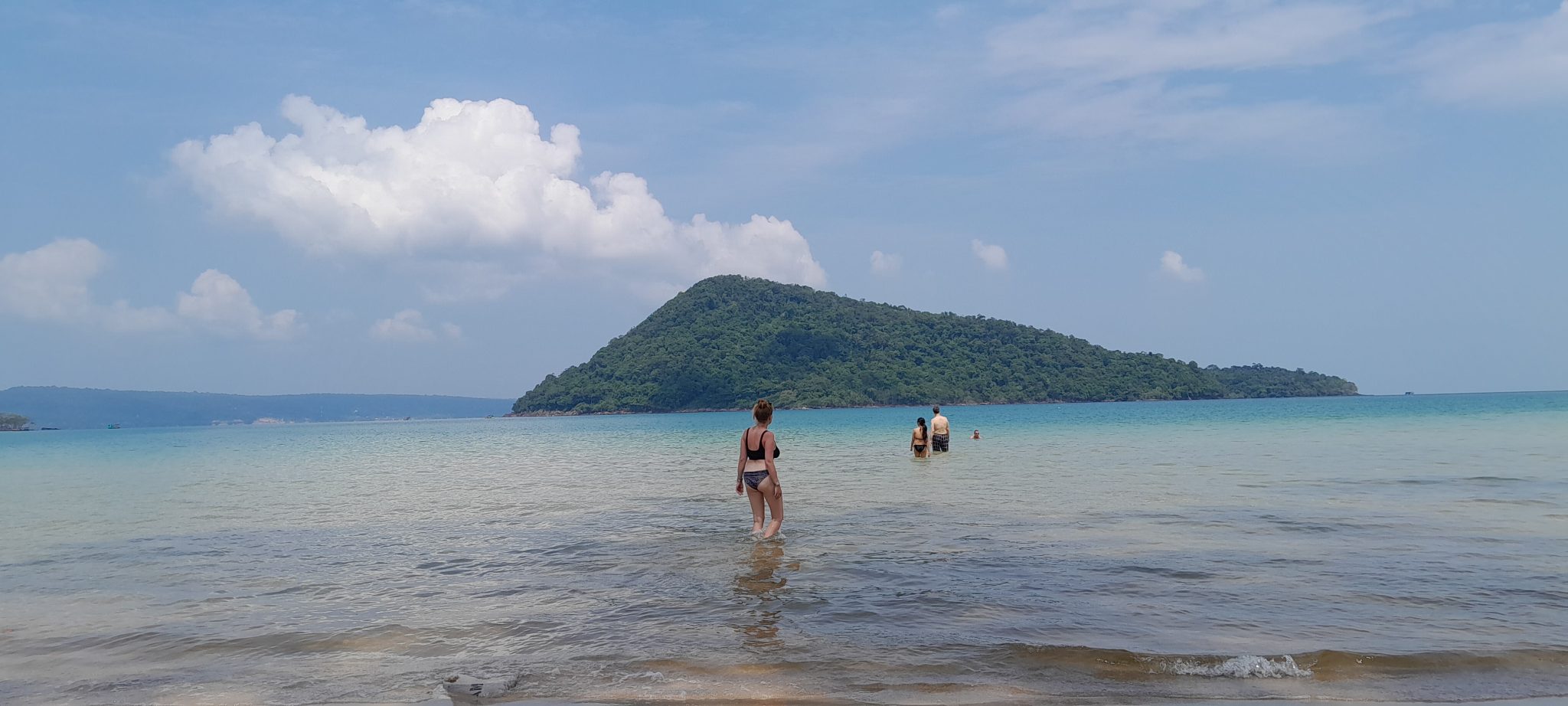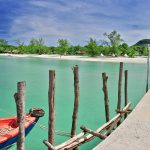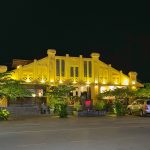Marissa Carruthers takes a trip to Koh Rong Samloem to sink into laidback Cambodian island life
I was always met with a look of sheer horror when I told people I’d only been to Koh Rong Samloem once way back in 2013. Even that was a fleeting visit for a story I was writing about Cambodia’s islands. This seems preposterous when I’ve been living here for more than 10 years.
It’s not that I’m not a beach bum. I most definitely am. It was more that I could never seem to find the time, and any long public holidays were usually spent abroad. However, with the introduction of the Phnom Penh-Sihanoukville Expressway in October, I no longer had an excuse and headed to the island for a three-day getaway.
Changing Cambodia
There’s no denying that Cambodia has undergone rapid development in the last decade. The capital’s skyline has raced upward and its belly spread outward. Blink and you’ll find yourself in the shadows of yet another towering condo.
Infrastructure projects have seen new roads and bridges built, the railway restored and new routes added, and two international airports are currently under construction. Look no further than Sihanoukville to witness the rapid pace of change. While the islands may have been a tad too far, I spent many weekends wiling away life on Otres Beach.
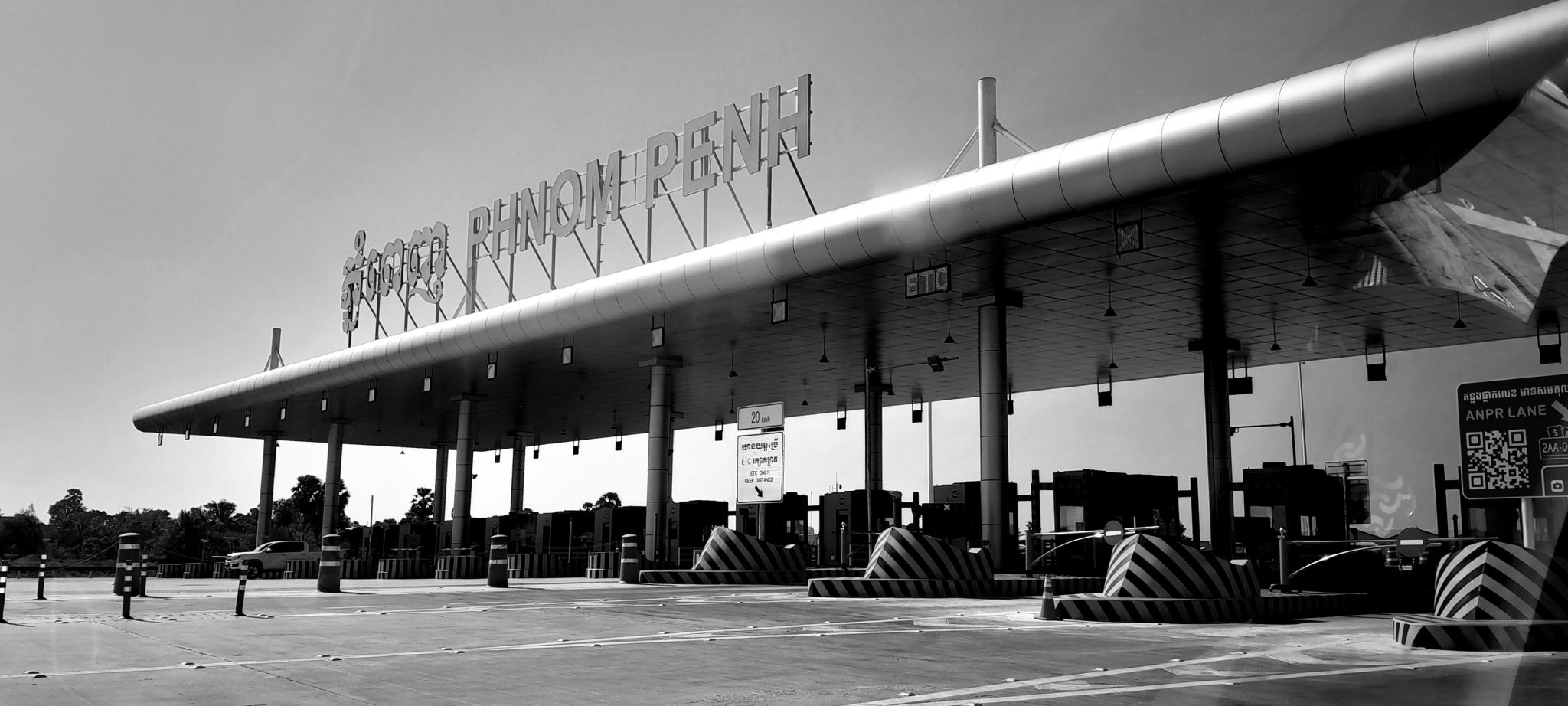

A few years ago, it was razed to pave the way for the mass development that within the space of a few years has transformed Sihanoukville from a laidback port town to a mish-mash of soaring sky-scrapers, casinos and nightclubs that mainly cater to the Chinese.
However, what is Sihanoukville’s loss is the islands’ gain, as a hefty chunk of travellers now skip a stop-over in the town and head straight to the islands instead.
One recent welcome change is the introduction of Cambodia’s first expressway, connecting the capital with the coastal city – and, wow, what a game changer it is. Gone are the five or six hours driving along bumpy stretches of roads, with terrifyingly hair-raising moments attempting to overtake a convoy of battered trucks.
Instead, once you escape the clutches of Phnom Penh’s traffic, it’s a smooth two-hour drive with almost no other vehicles in sight. This makes the islands a much more accessible weekend option for capital dwellers.
Leaving the mainland
Thanks to the new highway, coupled with a surprisingly quiet Friday morning on Phnom Penh’s roads, our taxi left the capital at about 9am and we made it to the docks with plenty of time to grab a coffee and buy boat tickets before catching the noon speedboat.
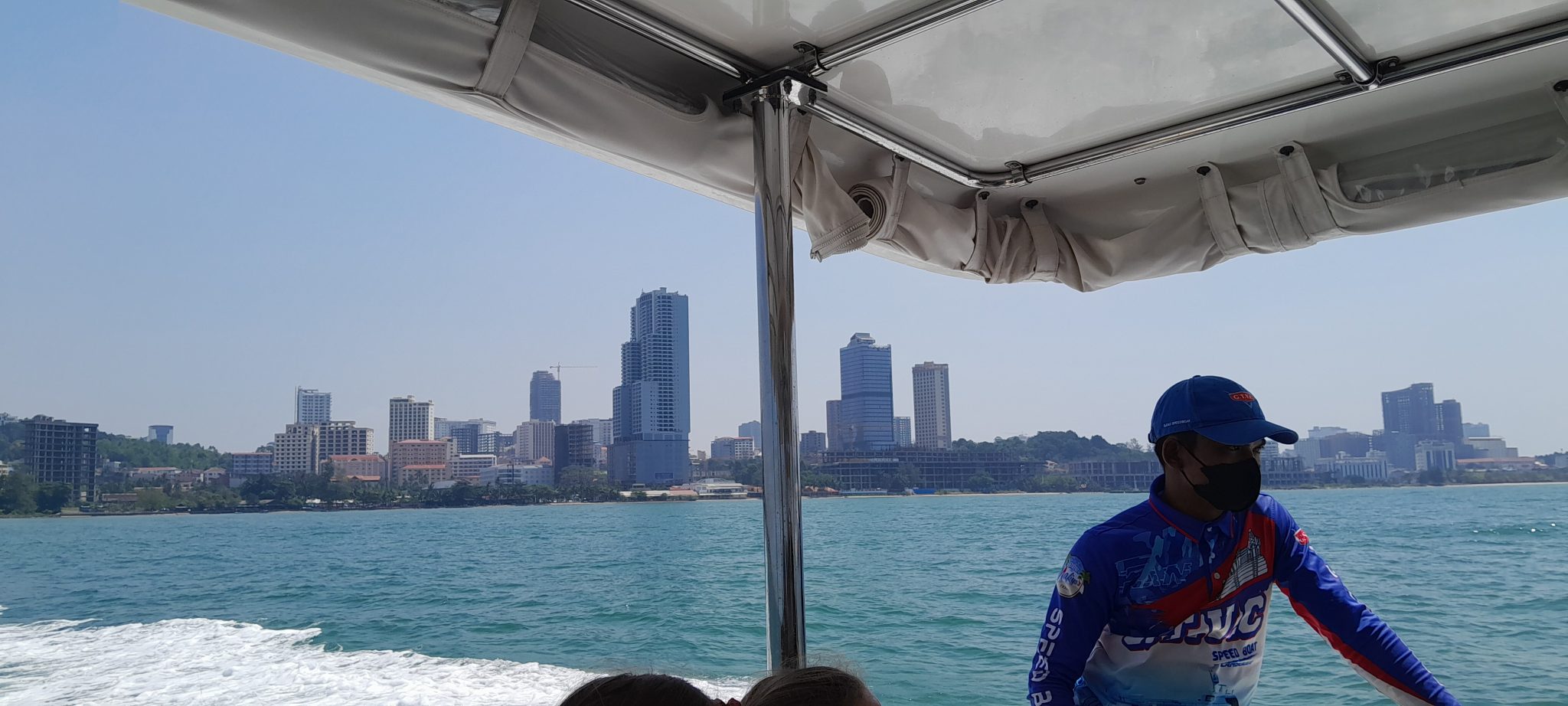

In the midst of a flurry of deadlines, overseas work trips and unsuccessfully trying to sort out a mountain of paperwork back in the UK, it was fair to say my stress levels were at a high as we boarded the boat. But as Sihanoukville’s high-rises shrunk to nothing more than a dot on the horizon, the whipping sea breeze washed my worries away. By the time we’d docked at Koh Rong Samloem’s M’Pai Bay, about 45 minutes after leaving the mainland via a stop at Saracen Bay, my woes were nothing more than a distant memory.
As we made our way along the wooden boardwalk towards a stretch of golden sand tickled by turquoise waters, with guesthouses, restaurants and bars peeking through gently wafting palms, any signs of stress had well and truly evaporated.
Welcome to paradise
While development is notable at M’Pai Bay, – the small single dirt track behind the beach that existed during my last visit has been upgraded, with the village now creeping up the hill that overlooks the bay – it’s being carried out island style: laidback and lazy. And, for now, its charm has been kept intact, preserving the low-key personality the bay is famed for.
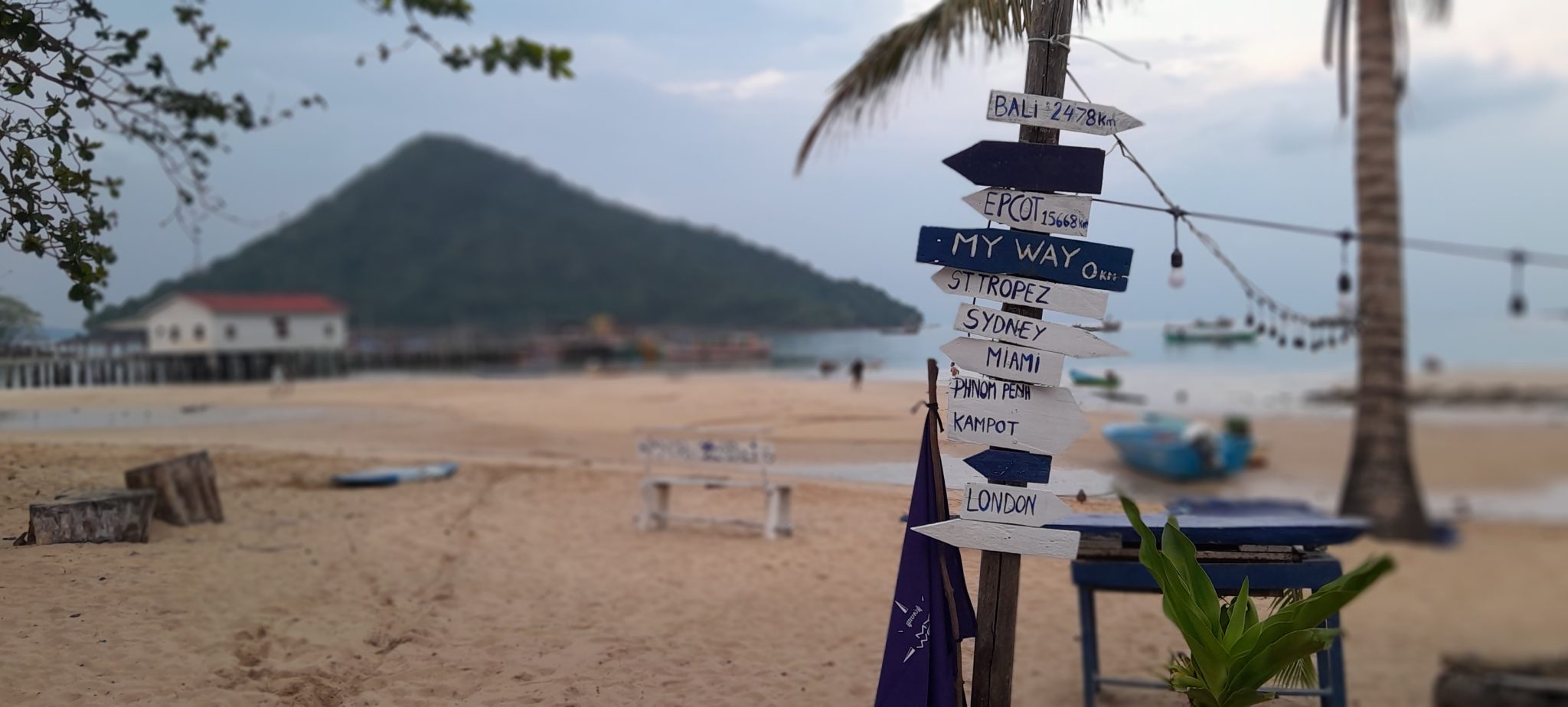

Located on the north of the island, M’Pai Bay still serves as a fishing village. However, the steady trickle of tourists over the years has provided many of the approximate 180 families who call the village home with an additional form of income.
One definite difference between my last visit is the quality of accommodation available, which has risen from backpacker to more flashpacker. In addition to basic guesthouses equipped with bare amenities that dotted the beachline during my last visit, today stand rooms that boast hot showers, air-conditioning, wifi, and – for the most part – a reliable electricity supply. If you head into the main village behind the beach, there’s even more choice.
I stayed at Lost and Found, a charming beachfront wooden guesthouse with rooms that overlook the sea. While we didn’t need to put the AC into use, the hot shower was very welcome – along with the Marmite and cheese toasties on the menu. Some of our friends stayed next door at My Way, a bright and breezy wooden house decked in blue and white.
What to do at M’Pai Bay
It’s fair to say that time seemingly stands still on M’Pai Bay. Only the ebb and flow of the tide and the switch between day and night serve as reminders that the clock is still ticking. While it’s tempting to park yourself on a sun lounger for the day and do little else, there’s plenty to discover.
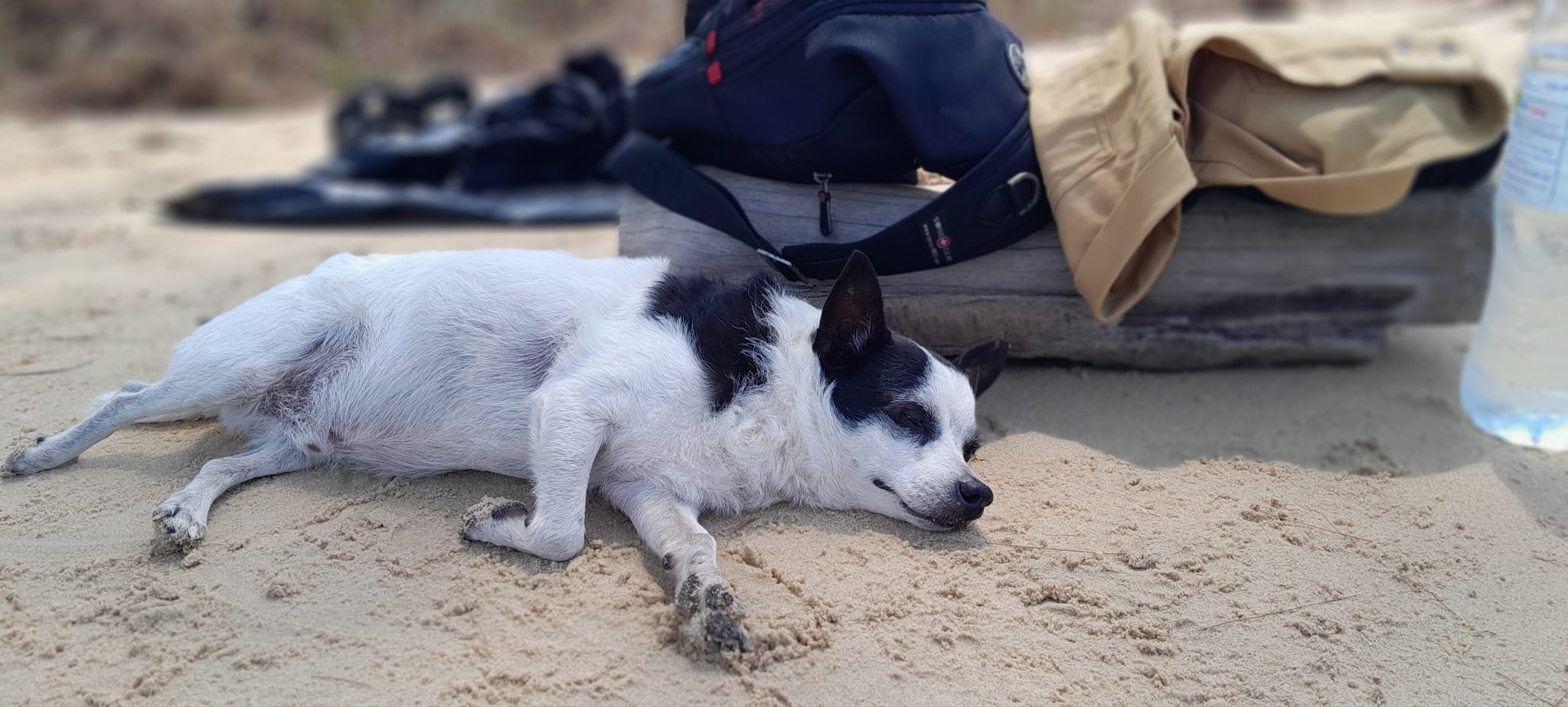

Bubbling below the water’s surface is a vivid array of marine life that has been mesmerising divers from across the globe for decades. Home to a cluster of top dive spots and coral reefs, M’Pai Bay has several dive and snorkel shops where you can rent equipment and embark on half- and full-day underwater adventures. Here, you can swim among cuttlefish and seahorses, with colourful corals home to a rainbow of underwater life.
Another way to explore the surrounding seas is by kayak. There are plenty of places to hire them along the beach, with the option to go solo or join a group tour. Paddling isn’t too tricky due to the bay’s delightfully calm waters, making this a fun way to spend a couple of hours in the morning or afternoon. Tackling this during the relentless midday heat is a task reserved solely for the insane.
Given M’Pai Bay’s status as a fishing village, colourful wooden long-tail boats can be seen bobbing on the bay’s waters. Many of these are available for hire to explore the island’s various coves and beaches, embark on a cliff diving adventure or simply dip into the inviting waters for a snorkelling session. A night excursion is a favourite with visitors, thanks to the area’s majestic bioluminescent plankton that illuminates the waters like a twinkling sky.
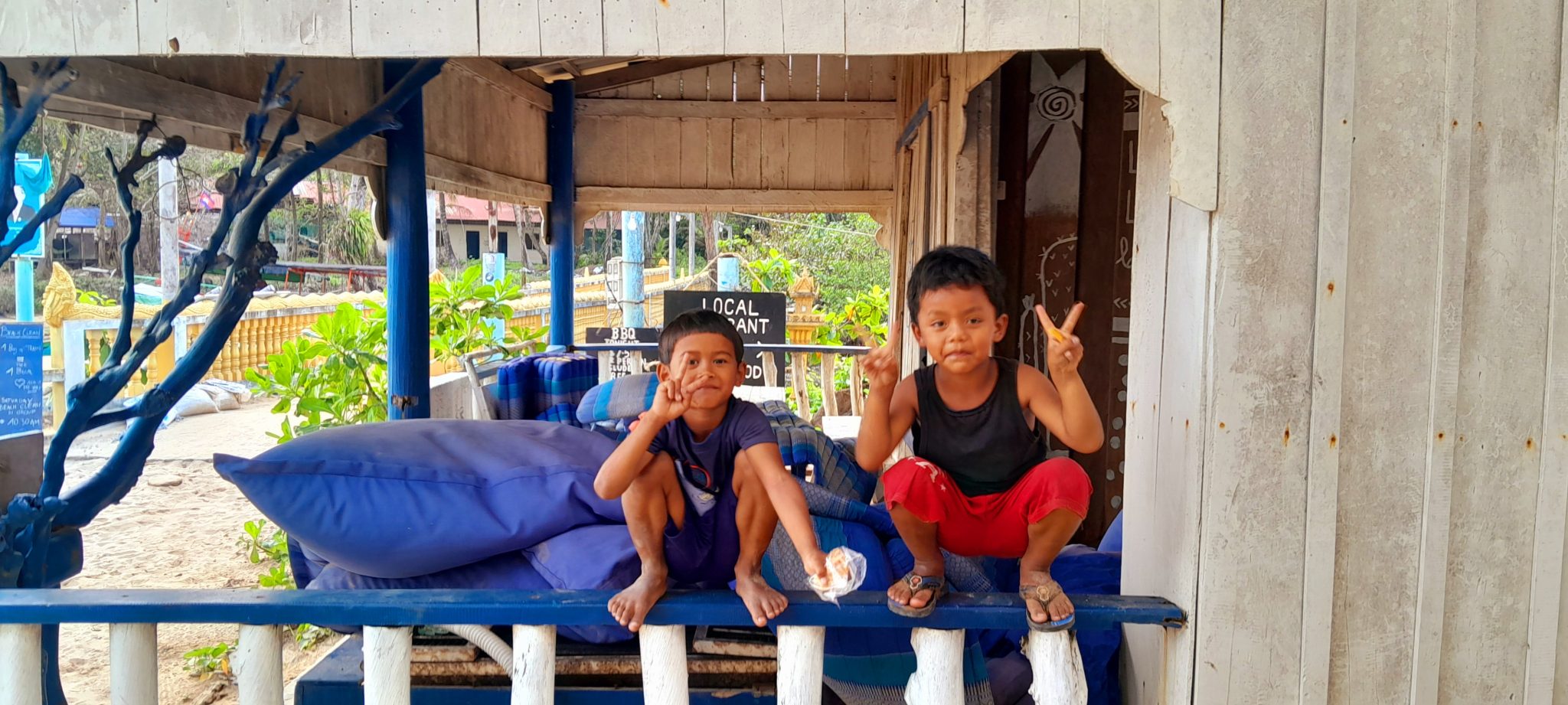

If you don’t mind getting hot and sweaty, then another way to explore the island other than by boat is to trek along jungle trails that traverse the 25 km² island. We were feeling lazy so skipped any hefty hiking and instead opted for a five-minute stroll along a beach track to neighbouring Long Beach.
Unlike M’Pay Bay and its beachfront of bars, restaurants and guesthouses, Long Beach is a lonely stretch of empty dazzling white sands – so remember to take food and drinks if needed as there are no vendors. We set up camp under the shade of trees that freckle the beach and spent the afternoon wading in the warm shallow waters, picnicking and chatting, with the beach to ourselves.
Where to eat
Despite the island’s rustic feel, there are plenty of places to eat and drink, with food served from all corners of the globe. Bong’s Guesthouse is the first spot to greet you as you step off the pier, with mostly Western comfort food on the menu. It’s also a popular spot to hang out in the evening.
In the village, Two Ducks perfectly embodies the pub vibe, and boasts a belter beer garden and impressively good burgers. Seapony Café serves healthy breakfasts with a view and lunch from noon. Think smashed avocado, breakfast burritos, and bagels galore. If Khmer food is more up your street, then there are plenty of spots along the main drag on the beach.
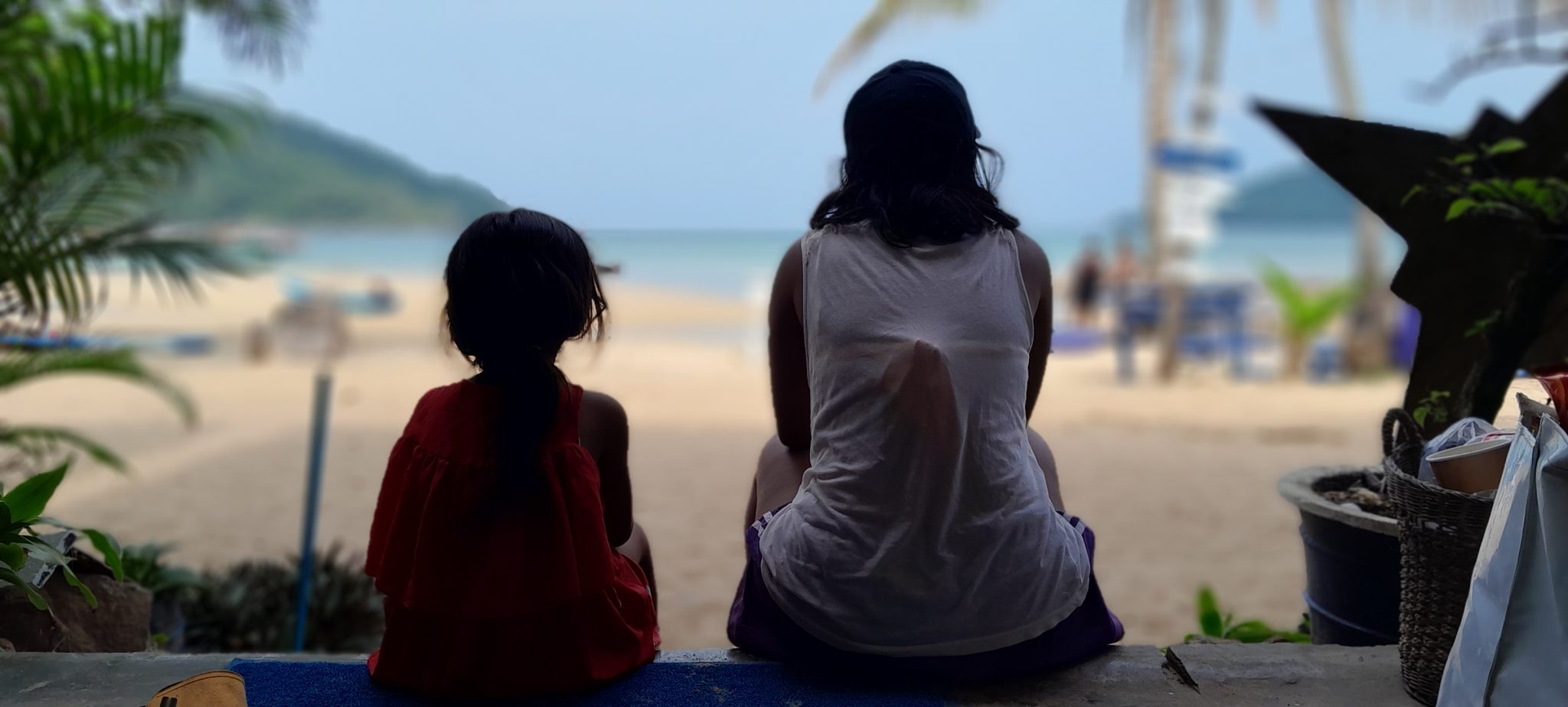

A great spot for sundowners is Bar Bok Bowie, where you can watch the sun sink into the horizon from its decks perched over the water. If you like gin and tonic, then it has a menu packed full of the beverage, each given a refreshingly contemporary twist. The Cliff Hostel is another good option to soak up one of the island’s splendid sunsets.
Change is on the horizon
Like the rest of Cambodia, development is creeping into Koh Rong Samloem. On the other side of the island, businesses have been turfed off Saracen Bay to pave the way for two large-scale tourism developments. The government has leased 1,124 hectares of the crescent-shaped bay to Emario Shonan Marine Corporation Ltd, and another 1,066 hectares to Koh Rong Samloem Island Resort Co Ltd, for development.
This week, another major development on the island was unveiled in the form of a $7.7 million project by GTVC Import Export Co., Ltd. The “One Island” project will involve the development of a resort and other tourism-related facilities.
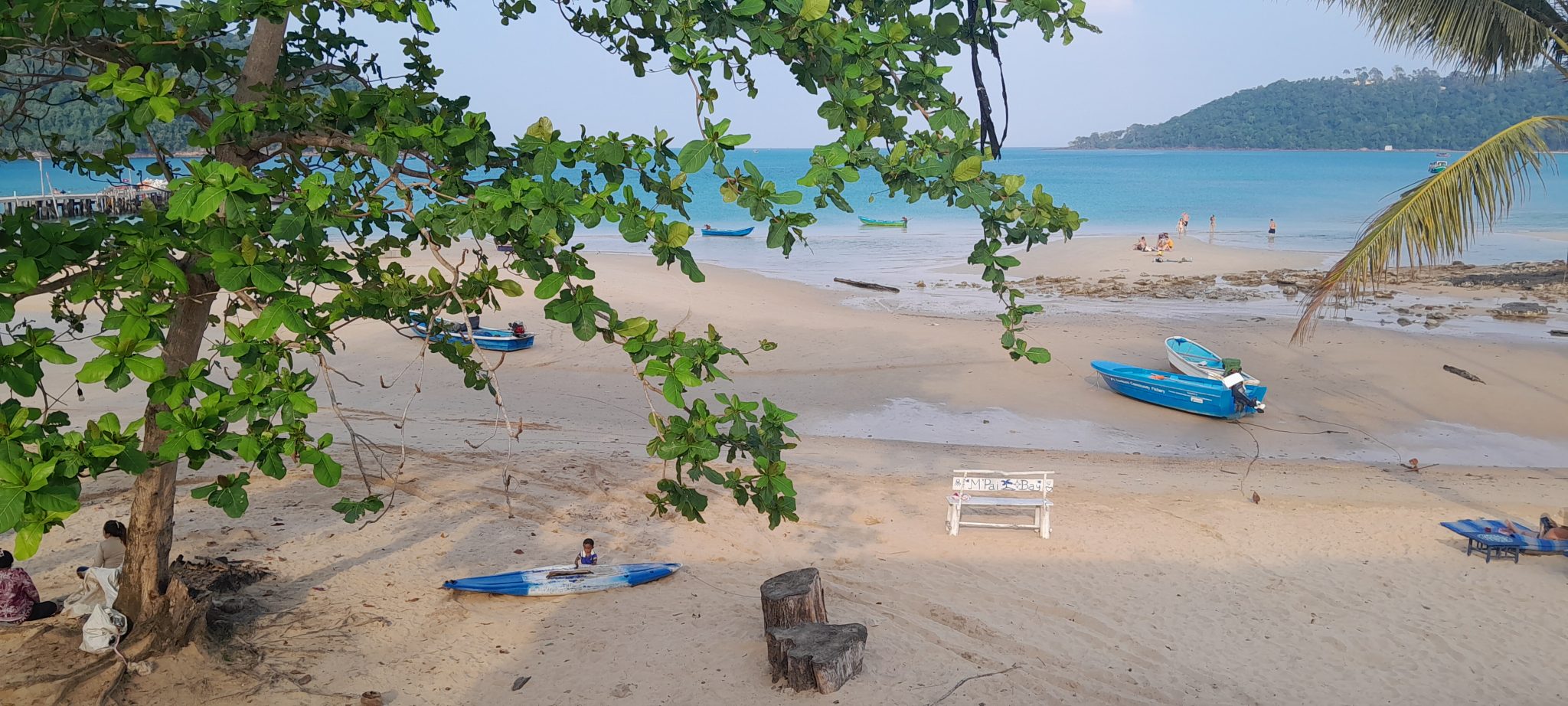

In January, an agreement was signed between the State Secretariat of Cambodian Civil Aviation and Royal Group Koh Rong Development Company to build a $300 million international airport on neighbouring Koh Rong in the next five years, meaning major change is on the horizon for Cambodia’s idyllic smattering of islands. All the more reason to visit now and experience true laidback island life.
How to get there
The GTVC speedboat service connects the island with Sihanoukville at 9am, 12pm and 3pm. A return ticket costs $25 and the journey takes about 45 minutes, stopping off at Koh Rong or other parts of Koh Rong Samloem before M’Pai Bay.
